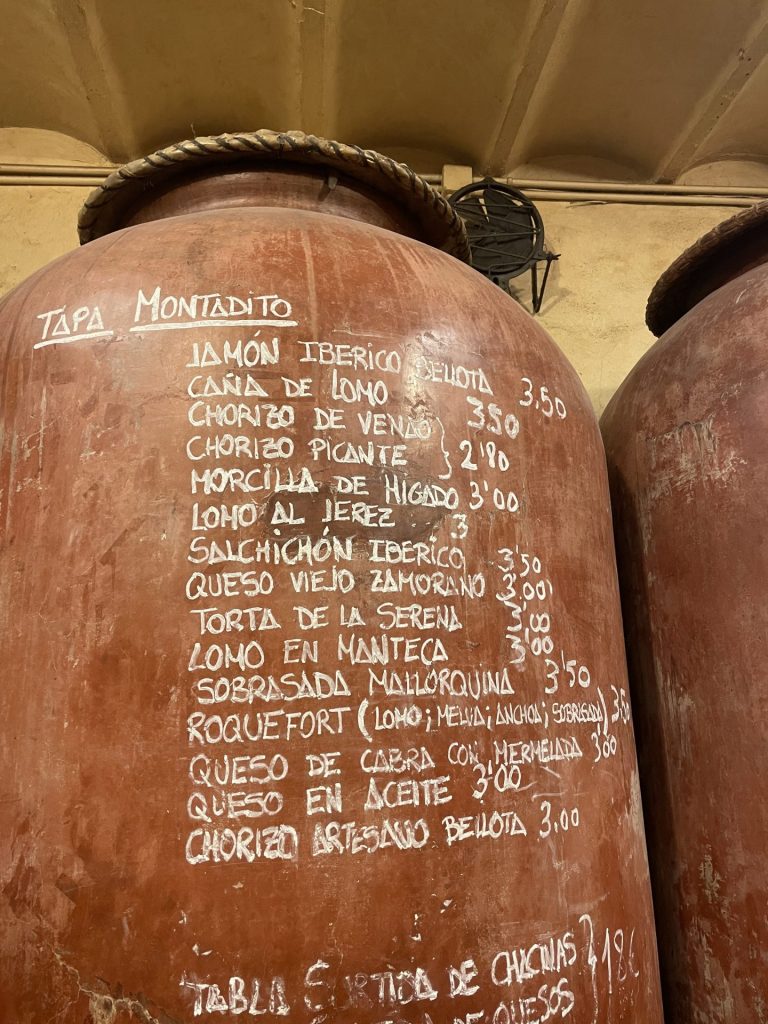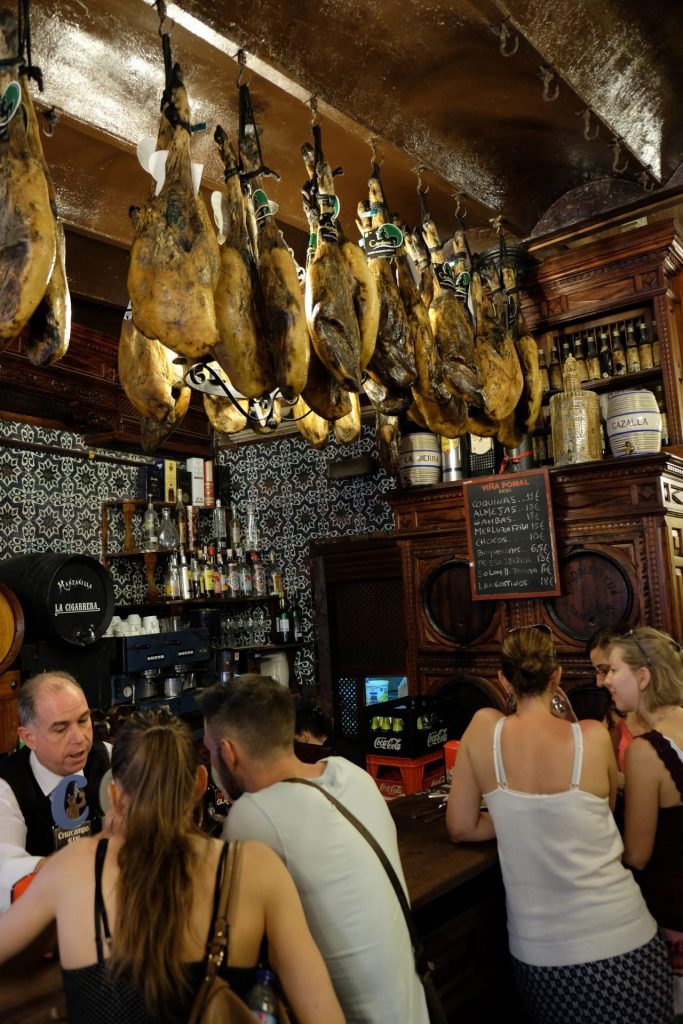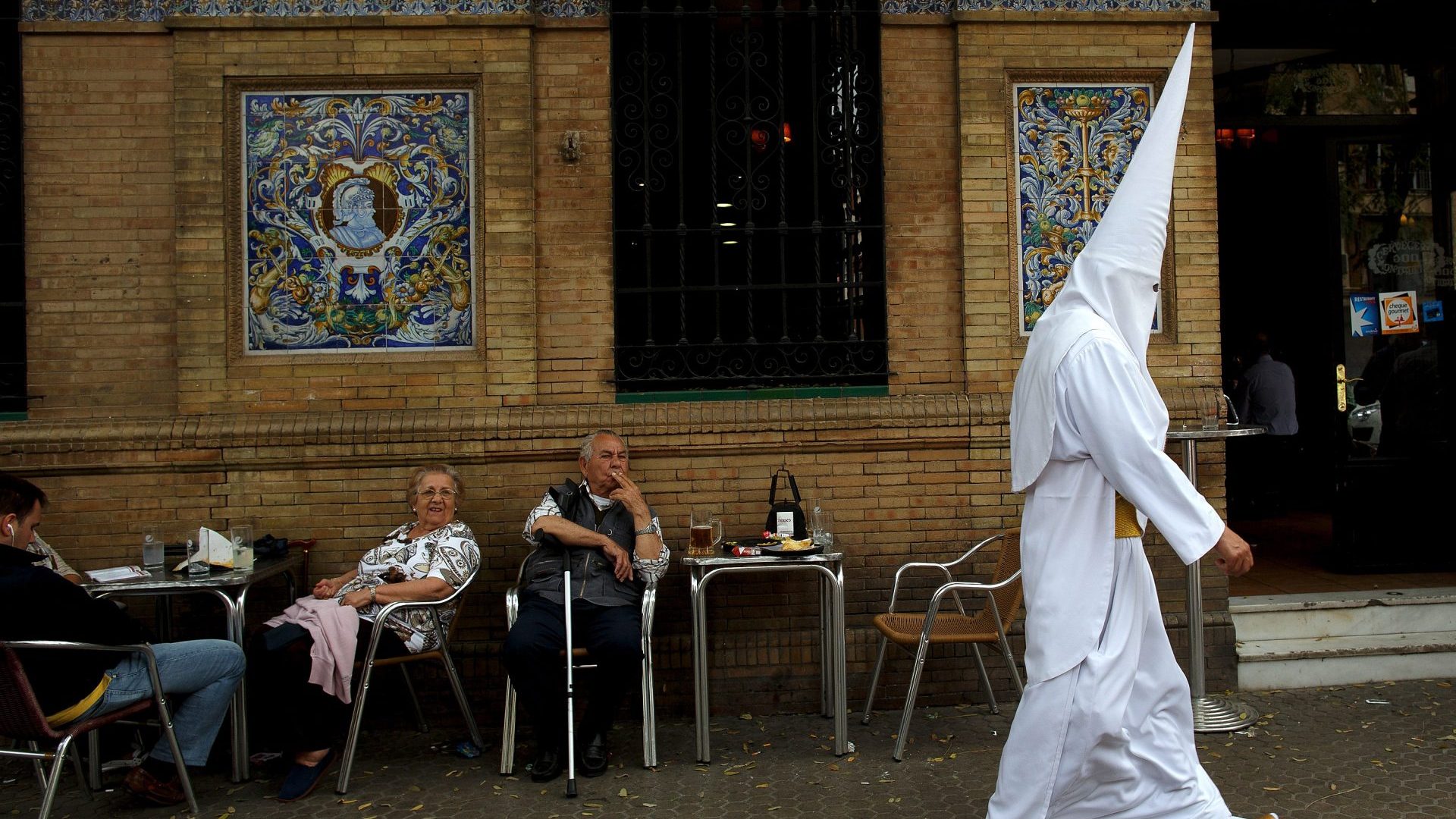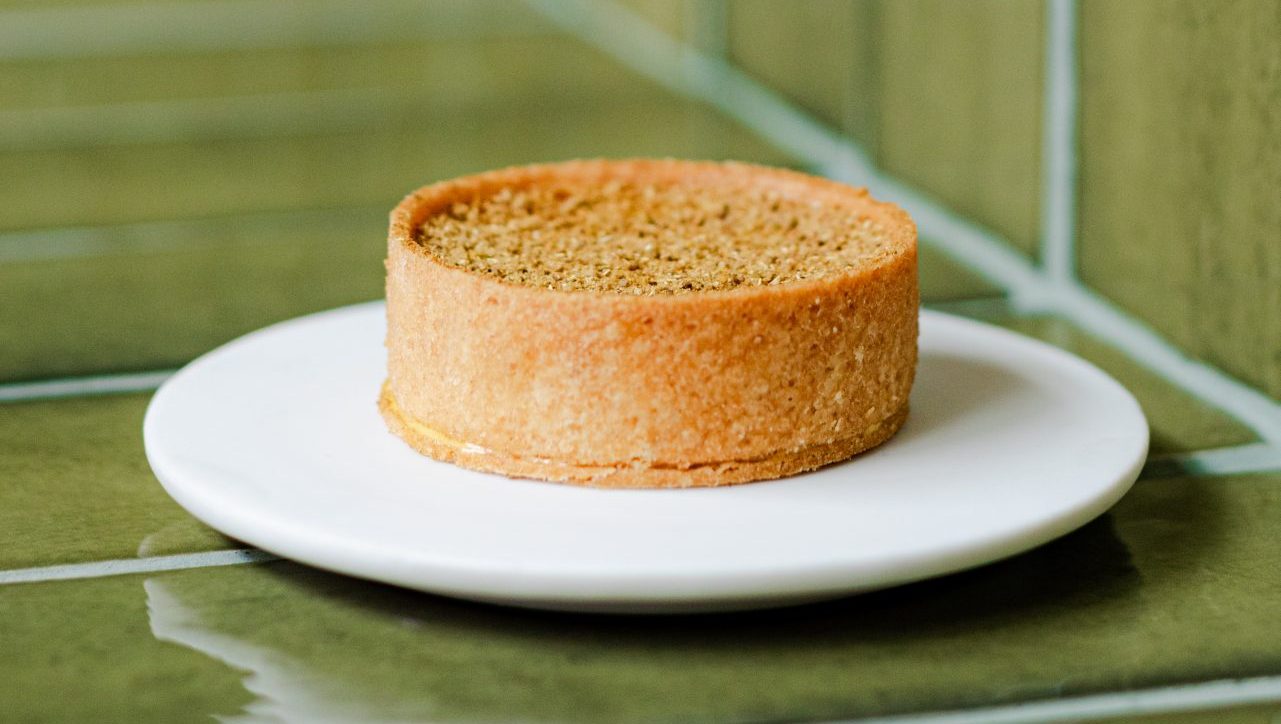As the sun sets in Seville, the city comes alive. Andalucía is almost semi-nocturnal. Sleepy mornings give way to sun-drenched lunches before many retire to their afternoon siesta until the temperature cools and the air gives way.
Periods of dormancy bring an energy to the south of Spain, yet it is so effortlessly relaxed. There is little sense of burden, and it is easy to become accustomed to such living. Each day appears as graceful as the last.
As far as dining is concerned, probably coffee and tostadas to begin: in the southern clutches of Spain, this means toasted slices of a baguette, topped with perfumed tomatoes drizzled in olive oil, a fold or two of ham, or a generous rectangle of manchego, the buttery sheep’s-milk cheese from La Mancha. Each one is a marvel and it is best to have all three.
Come lunch, between 1pm and 3.30pm and where a small glass of beer or wine might enter proceedings, the food is gentler still: popular is a bowl of gazpacho – certainly in the warmer months – happily famous in the UK today, or lesser-known soups such as salmorejo, from nearby Córdoba, where old bread is used to bolster tomatoes, olive oil and garlic, and ajoblanco, most popular in Granada and Málaga to the south-east, which calls for almonds and vinegar in lieu of red fruit. Talking of fruit, a couple of oranges would never go amiss.
And then a sleep, and then tapas.
I arrive in Seville on a midweek day in dry, crackling heat. With me is José Pizarro, founder of a group of tapas restaurants in London, each named differently but eponymously, and we are met by María Castro, our fixer. Frequent visits to Granada and Málaga have come before – the prawns, calamari and sardines, barbecued on the beach in Málaga, are one of Europe’s greatest culinary joys; an evening of broad beans, ham and cheap red wine in a flamenco cave in Granada’s hilly old town is Bourdain-like in its sentimentality – but this is my first time in Seville, Andalucía’s historic capital.

We set off on a tour of the taparía. Logistics and an eagerness for beer mean we start early, far too early by Spanish standards, but then I fail to see how any tourist – me – and any excitable chef – Pizarro – might pass up the opportunity for a Cruzcampo lager and one or two portions of la pringá.
La pringá? It’s so moreish it is impossible not to fatten yourself, even if visiting for a matter of days. Typically, this is yesterday’s stew, of pork or beef or indeed any meat really, with chorizo or morcilla sausage, lots of garlic, always tomatoes and paprika, sometimes chickpeas that have broken down into a thickening paste. The stew is cooked low and slow and served with bread. In a host of taparía, at least the ones we visited, the meat is reduced, slipped into crusty white bread and sliced into small, three-bite pieces. With a small glass of ice-cold beer, it is nothing short of transcending.
“The whole point of this is that it is easy,” Pizarro tells me. “Look how simple it is, but look how beautiful. The key is to cook the meat slowly, and I like it with morcilla, which brings depth. It’s quite rich, but in small bites, in bread, with beer, it works so well. Tell me a better way to spend an afternoon. I just love it. I love it so much.”
We visit too many tapas bars to list. We also eat too many bowls of food – each one memorable – to document here. But in El Tenderete, a diminutive and busy pocket-sized bar, we find Russian salad (ensaladilla rusa), common in Andalucía. Recipes vary, but might include peas, carrots, and onions by way of vegetables. Shrimp is added from time to time, but my favourite are those with chopped boiled egg and tuna, hearty and salty, with soft potatoes and mayonnaise. Breadsticks or crackers are always delivered with a plate of Russian salad (and with any charcuterie), as they are ideal for scooping. These little doses of dry carbohydrate are essential to Andalucían life.
We walk on to Las Teresas, a loud and busy haunt with splintered ceilings covered by hanging hams. They are jamón Ibérico of different gradings, glistening with fat and promise. Here, we feast on boquerones (anchovies), as fresh as the sea and just as salty. They are dressed in good olive oil and flecks of chilli, and to place two juicy strips on bread is a remedy for the copious glasses of wine. And sherry, dry: fino; manzanilla; and amontillado, which is darker in colour and perhaps more complex.

After boquerones comes morcón, a cured meat from Salamanca. The pork is flavoured with garlic, paprika, and salt. “You know,” Pizarro tells me, “to have the fish, and then the charcuterie, with sherry, is one of life’s greatest pleasures.”
After this – a siesta. On the way home we stop to admire Moorish towers and for Pizarro to complain about a tourist trap serving bowls of suboptimal bolognese. Hey, the Spanish want other cuisines as we do, but not overcooked pasta swimming in watery sauce.
In my hotel room, my siesta is late, but no matter. I wake to the buzz of Seville, its pavements singing in the sun. We head to Eslava and dine on a big table outside in a small town square. To drink, El Muelle, made with palomino fino grapes, which is crisp. Suddenly, puntillitas appear, or fried baby squid. This is not the calamari of chain restaurants in the Home Counties, uniform rubber rings, but ones in various sizes, and whole pieces, tentacles curling upwards, tender in their patchy breadcrumb shells.
Pizarro also orders the revuelto de espinacas y almejas: spinach with scrambled eggs and clams. He tells me Eslava might be the only restaurant to serve this, at least as far as he’s seen. It is their recipe, their dish, and it alone is worth the journey to Seville.
“I do not know how they do it, I’ve never asked,” says Pizarro. “But it is glorious. It is unbelievable.”
Our waiter brings a pan-full of clams. They are sweet, the eggs are creamy and a deep yellow, and the spinach tangled among it all brings an earthiness. Slices of garlic are enormous: it is a garlicky dish. I cannot eat enough.
Plates of fried baby red mullet follow, then something called “A cigar for Bequer”, where smooth béchamel is blended with squid ink, cuttlefish and seaweed, and wrapped in thin layers of filo pastry. We sip Zancúo Selección, made with petit verdot in Sierra Norte. So nurturing when slightly chilled.
Quite how we fit more food in remains a puzzle. But we do. We wander towards Casa Morales, a historic spot bursting with atmosphere, where diners sit on high-top tables surrounded by sherry barrels, music tinkling. Here, more wine – borboleta, a juicy red native to Seville – and a spicy spinach curry, as north African in influence as the city’s ancient architecture. It comes with slices of thick fried bread. Mopping up food is so perfect at the end of an evening.
Pizarro says: “Tapas is part of Andalucían culture. It’s about socialising outdoors and sharing. People love to gather, have a beer, and everyone enjoys chatting. Happy vibes seem so normal here.
“As for the food, it’s about the quality of the ingredients. Very simple, but delicious. Papas aliñás, for example, which is just boiled potatoes dressed with extra virgin olive oil and sherry vinegar. It’s good because the area has such good oil and such wonderful sherry.”
I only have one day left, and my mind turns to the richness I will leave behind. Why does Seville have such a rich food culture, where socialising is centred not on pub boozing – as it is in the UK – but sipping sherry and plucking up sheets of acorn-hewn, fat-rimmed jamón Ibérico?
For Sevillanos, food is ritualistic. It is a city free of pretence, and where seasonality and provenance are important. The UK, like Spain, has a culinary bounty, and yet so often it is disparate – a post-pints kebab, or an £80 meal in a restaurant where natural wine is explained and the sourdough bread brought out with a quiet desperation.
In Seville, food and drink needs no explanation – it is simply ingrained in the city’s way of life. These are traditions that go so far back that they are for everyone. Here, many more people can afford an evening out.
But it is not only financial. Seville’s proximity to the sea to the south, and to the pork-saddled lands in the hills around it, open the city up to a huge range of produce. Moreover, rents are cheaper, VAT on food and drink is lower. Spain – Andalucía no exception – is not without its financial problems, but when it comes to food and drink, especially dining out in restaurants, these matters appear far simpler.
To appreciate a bowl of soft, well-made gazpacho, to dip a crust of bread in good olive oil, to slurp up curling anchovies and to dollop Russian salad on a dry cracker before another glass of something crisp and dry – many people can have these experiences. In the UK, such marvels would cost double, triple what they do in Seville.
Before flying home, there is time for lunch. At a more upmarket restaurant, Cinco Jotas, we eat jamón Ibérico, the region’s most famous export. María Castro shows us the acorn-eating Iberian pigs on her farm. We eat only black label, aged jamón Ibérico de bellota, the highest level of accreditation for the ham. It is nutty, aromatic; it melts in the mouth. We gorge on piece after piece.
The memory of it, and of Seville itself, hangs heavy on my mind.




